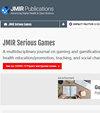基于虚拟三维模拟的数字化培训模块对培养牙科技术专业学生可摘局部义齿设计的长期能力的效果:前瞻性队列研究
IF 3.8
2区 医学
Q1 HEALTH CARE SCIENCES & SERVICES
引用次数: 0
摘要
摘要 背景 可摘局部义齿(RPD)设计对牙科治疗的长期成功至关重要,但几十年来,牙科学生在RPD设计培训和能力掌握方面一直存在缺陷。数字化制作在口腔医学中越来越盛行,在我们以前的工作中所报告的经过认证的牙科技师客观操作技能考试(OMEDT)系统框架下的数字化 RPD(D-RPD)模块,可能会改善学生现有的 RPD 培训模式。目的 我们旨在确定基于虚拟三维仿真的渐进式数字化培训模块与传统培训相比在 RPD 设计方面的效果。方法 我们对重庆医科大学口腔医学院的口腔医学技术专业学生进行了一项前瞻性队列研究。队列 1 接受传统的 RPD 设计培训(7 周)。第二组学生接受基于文本和二维草图的 D-RPD 模块培训(7 周)。第 3 组接受基于文本和二维草图的 D-RPD 模块试点培训(4 周),并继续接受基于真实患者三维虚拟模型的培训(3 周)。培训结束后 1 个月和 1 年,我们根据虚拟模型进行了 RPD 设计测试。我们收集了 RPD 设计得分和每次评估所花费的时间。结果 我们收集了培训后 1 个月和 1 年的 RPD 设计得分以及进行每次评估所花费的时间。本研究共招募了 109 名学生,包括 58 名女生(53.2%)和 51 名男生(56.8%)。在两项测试中,第 1 组得分最低,第 3 组得分最高(第 1-3 组在 1 个月时的平均得分分别为 65.8,SD 21.5;81.9,SD 6.88;85.3,SD 8.55;P<.001;第 1-3 组在 1 年时:平均得分分别为 60.3,SD 16.7;75.5,SD 3.90;90.9,SD 4.3;P<.001)。在 1 个月时,各组间所用时间的差异无统计学意义(1-3 组:平均时间为 2407.8 秒,标定时间为 1370.3 秒;平均时间为 1835.0 秒,标定时间为 1329.2 秒;平均时间为 1790.3 秒,标定时间为 1195.5 秒;P=.06),但在 1 年时具有统计学意义(队列 1-3:平均值分别为 2049.16,SD 1099.0 秒;平均值分别为 1857.33,SD 587.39 秒;平均值分别为 2524.3,SD 566.37 秒;P<.001)。队列内比较显示,队列 1 在 1 个月和 1 年后的得分差异无统计学意义(95% CI -2.1 至 13.0;P=.16),而队列 3 在 1 年后的得分显著较高(95% CI 2.5 至 8.7;P=.001),队列 2 在 1 年后的得分显著较低(95% CI -8.8 至 -3.9;P<.001)。结论 队列 3 在两个时间点均获得了最高分,并在 1 年后保持了能力,这表明包括虚拟 3D 模拟在内的渐进式 D-RPD 培训有助于提高 RPD 设计能力。采用 D-RPD 培训可能有利于学习效果。本文章由计算机程序翻译,如有差异,请以英文原文为准。
Efficacy of a Virtual 3D Simulation–Based Digital Training Module for Building Dental Technology Students’ Long-Term Competency in Removable Partial Denture Design: Prospective Cohort Study
Abstract Background Removable partial denture (RPD) design is crucial to long-term success in dental treatment, but shortcomings in RPD design training and competency acquisition among dental students have persisted for decades. Digital production is increasing in prevalence in stomatology, and a digital RPD (D-RPD) module, under the framework of the certified Objective Manipulative Skill Examination of Dental Technicians (OMEDT) system reported in our previous work, may improve on existing RPD training models for students. Objective We aimed to determine the efficacy of a virtual 3D simulation–based progressive digital training module for RPD design compared to traditional training. Methods We developed a prospective cohort study including dental technology students at the Stomatology College of Chongqing Medical University. Cohort 1 received traditional RPD design training (7 wk). Cohort 2 received D-RPD module training based on text and 2D sketches (7 wk). Cohort 3 received D-RPD module pilot training based on text and 2D sketches (4 wk) and continued to receive training based on 3D virtual casts of real patients (3 wk). RPD design tests based on virtual casts were conducted at 1 month and 1 year after training. We collected RPD design scores and the time spent to perform each assessment. Results We collected the RPD design scores and the time spent to perform each assessment at 1 month and 1 year after training. The study recruited 109 students, including 58 (53.2%) female and 51 male (56.8%) students. Cohort 1 scored the lowest and cohort 3 scored the highest in both tests (cohorts 1-3 at 1 mo: mean score 65.8, SD 21.5; mean score 81.9, SD 6.88; and mean score 85.3, SD 8.55, respectively; P<.001; cohorts 1-3 at 1 y: mean score 60.3, SD 16.7; mean score 75.5, SD 3.90; and mean score 90.9, SD 4.3, respectively; P<.001). The difference between cohorts in the time spent was not statistically significant at 1 month (cohorts 1-3: mean 2407.8, SD 1370.3 s; mean 1835.0, SD 1329.2 s; and mean 1790.3, SD 1195.5 s, respectively; P=.06) but was statistically significant at 1 year (cohorts 1-3: mean 2049.16, SD 1099.0 s; mean 1857.33, SD 587.39 s; and mean 2524.3, SD 566.37 s, respectively; P<.001). Intracohort comparisons indicated that the differences in scores at 1 month and 1 year were not statistically significant for cohort 1 (95% CI –2.1 to 13.0; P=.16), while cohort 3 obtained significantly higher scores 1 year later (95% CI 2.5-8.7; P=.001), and cohort 2 obtained significantly lower scores 1 year later (95% CI –8.8 to –3.9; P<.001). Conclusions Cohort 3 obtained the highest score at both time points with retention of competency at 1 year, indicating that progressive D-RPD training including virtual 3D simulation facilitated improved competency in RPD design. The adoption of D-RPD training may benefit learning outcomes.
求助全文
通过发布文献求助,成功后即可免费获取论文全文。
去求助
来源期刊

JMIR Serious Games
Medicine-Rehabilitation
CiteScore
7.30
自引率
10.00%
发文量
91
审稿时长
12 weeks
期刊介绍:
JMIR Serious Games (JSG, ISSN 2291-9279) is a sister journal of the Journal of Medical Internet Research (JMIR), one of the most cited journals in health informatics (Impact Factor 2016: 5.175). JSG has a projected impact factor (2016) of 3.32. JSG is a multidisciplinary journal devoted to computer/web/mobile applications that incorporate elements of gaming to solve serious problems such as health education/promotion, teaching and education, or social change.The journal also considers commentary and research in the fields of video games violence and video games addiction.
 求助内容:
求助内容: 应助结果提醒方式:
应助结果提醒方式:


